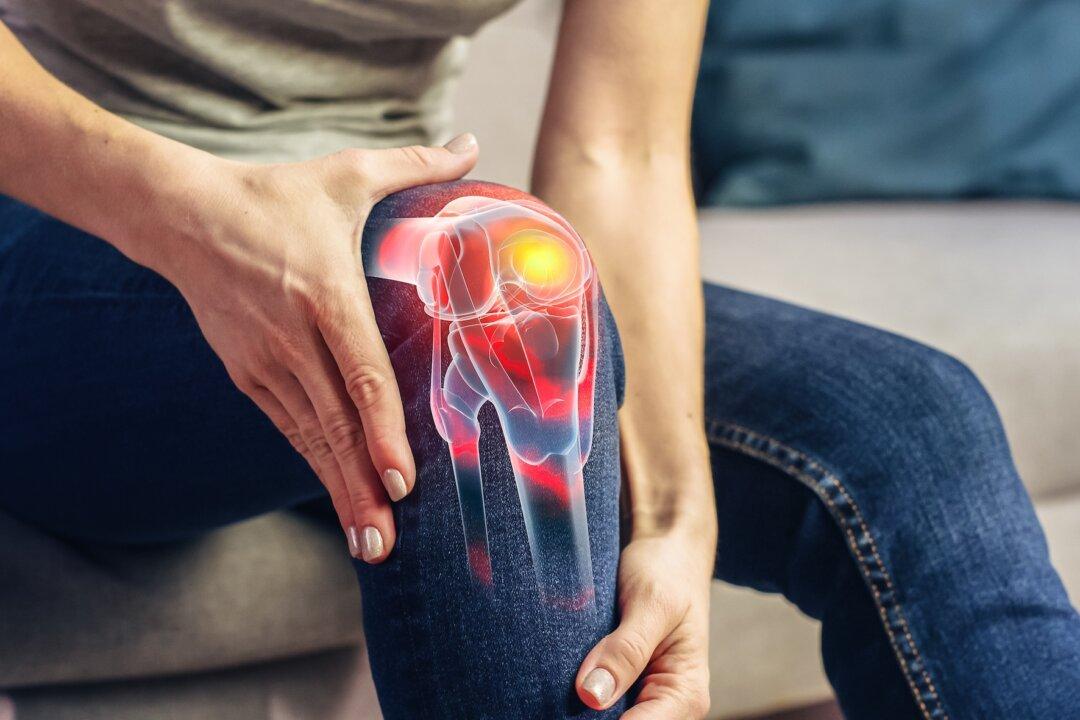Eighty percent of North Americans have X-ray evidence of osteoarthritis by age 65, and sixty percent have significant joint pain. A recent study compared the size of knee cartilage in:
- 176 skeletons of people who lived from 6000 to 300 years ago (from U.S. museums)
- 1581 skeletons of people who died between 1905 and 1940, during the early industrial era
- 819 skeletons of people who died between 1976 and 2015 during the modern post-industrial era
It now appears that osteoarthritis may be a disease of inflammation caused mostly by lack of exercise, being overweight, eating a pro-inflammatory diet and having inadequate vitamin D levels (JAMA, November 22, 2017). For example, knee cartilage has such a poor blood supply that it has to get its nutrients from constant movement and weight bearing that effectively pumps the nutrients into the cartilage. Not moving your knees enough deprives knee cartilage of the nutrients necessary to sustain itself so that the cartilage becomes smaller and weaker. Knee cartilage can be damaged in sports activities or accidents, but less than 10 percent of knee osteoarthritis appears to be related to trauma.
Symptoms of Osteoarthritis
People are usually diagnosed as having osteoarthritis if they:- have gradually increasing pain in their knees, hips, hands or spine
- are age 40 or older
- have negative results in the standard blood tests for the known causes of arthritis such as gout or psoriasis
- have pain that is usually worse in the morning when a person first gets up. In osteoarthritis, the pain usually lessens as the person keeps moving. In rheumatoid arthritis, the joints often continue to hurt for more than an hour after a person starts moving about.
- if hands are affected, the swelling of the knuckles and joints caused by osteoarthritis is on the ends of the fingers next to the fingernails (not in the middle finger joints) and at the base of the thumb. Rheumatoid arthritis usually affects the middle joints of the fingers and the joints where the fingers attach to the hand.
Evidence of Inflammation
Your immunity is good for you because it kills germs that try to invade your body and works to heal injured tissues. However, after the germ is gone or the wound is healed, your immunity is supposed to slow down. If your immunity remains active, it uses the same chemicals and cells that attack germs to attack you and that includes destroying the cartilage in your joints. Recent research shows that osteoarthritis can be caused by inflammation, the same overactive immunity that causes heart attacks.- People with osteoarthritis have high blood levels of galectins that turn on a person’s immunity to cause inflammation, just like in rheumatoid arthritis and reactive arthritis (The Journal of Immunology, February 15, 2016;196(4):1910-1921).
- Almost 70 percent of obese people develop knee osteoarthritis (Arthritis and Rheumatism, Sept 15, 2008;59(9):1207-13) and losing as few as 11 pounds reduces risk of developing knee osteoarthritis among women by 50 percent (Arthritis and Rheumatism, August 1998;41(8):1343-55). Excess weight causes inflammation.
- A study of almost 5000 people showed that those who eat a plant-based Mediterranean-type (anti-inflammatory) diet have a much lower prevalence of osteoarthritis (Clin Nutr, Oct 8, 2016).





